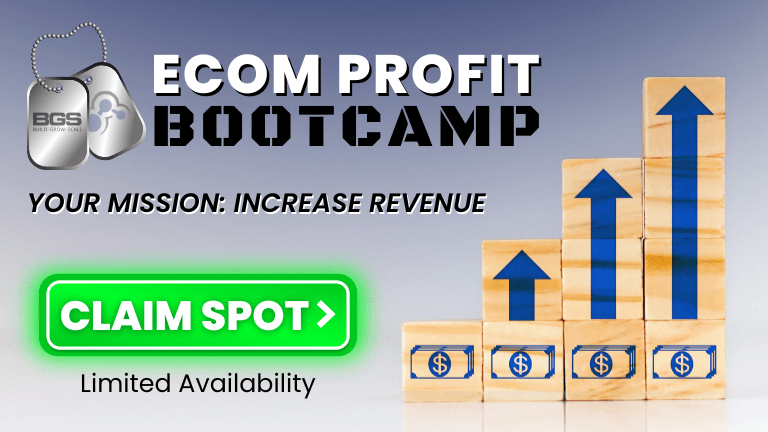Ecommerce Website Optimization: Crucial Insights from Matthew Stafford

Aleksandar Nikoloski | May 26, 2023
Reading Time: 3 minutesIn the rapidly evolving ecommerce landscape, effective website optimization is the lifeblood of any successful business. Recently, Matthew Matthew, CEO of Build Grow Scale, shared in-depth insights on ecommerce website optimization. Let’s dive into the key takeaways from his enlightening conversation with Kasim from Solutions 8.
Understanding User Behavior and Personalization
Firstly, Matthew emphasizes the importance of understanding user behavior before starting with ecommerce optimization. Every ecommerce site visit is a story that starts with the user’s initial engagement and ends with their exit. By tracking and analyzing user behavior, businesses can gather invaluable insights into how customers interact with their website. Are they adding items to their carts and then abandoning them? Are they visiting a specific product page multiple times before finally making a purchase? Are they scrolling down the product page to read product reviews? Understanding these patterns and more can greatly enhance ecommerce website optimization efforts.
Adding to this, Stafford also mentions the potential of personalization. In today’s ecommerce landscape, personalization is no longer just a ‘nice-to-have’, but rather a critical component of successful online businesses. From product recommendations to personalized marketing messages, ecommerce businesses need to create unique, tailored experiences for their customers.
Start With The Right Focus
Contrary to popular belief, Matthew argues that starting with homepage optimization might not lead to the most profit or a higher conversion rate. While it’s the first thing your customers see, the homepage isn’t always where the conversions happen. This brings us to an important point about ecommerce website optimization:
Understanding The Role of Each Page in the Customer’s Journey
Understanding the role of each page in the customer’s journey is a critical aspect of ecommerce website optimization. From the homepage serving as a digital storefront to category pages acting as a navigational guide, each page has a distinct function. Product pages aim to convert, cart pages provide a space for review, and checkout pages finalize the transaction. Additionally, search results pages cater to users with high purchase intent, while contact and about pages help build trust and foster customer relationships. Recognizing these roles ensures an optimal user experience and drives higher conversion rates.
1. Money-Making Main Menu Navigation
An often-overlooked element of ecommerce website optimization is the main menu navigation. Matthew suggests focusing on money-making links. In other words, your main menu should guide your customers towards pages that drive sales and conversions, such as popular product categories or ongoing sales.
2. The Power of Search in eCommerce
Matthew sheds light on an interesting statistic: search accounts for 10% of your traffic but contributes to 30% of your sales. This underlines the importance of a well-optimized search function on your website. Ensuring your search bar is user-friendly and effective can significantly improve your conversions.
3. The Downside of Online Store Catalogs
According to Matthew, one reason online store catalogs don’t convert well is because they are often designed by developers who are not conversion specialists. A successful ecommerce website should not merely showcase products like a catalog; instead, it should guide customers through the buying process and encourage conversions.
4. Avoid Rushing to Checkout
Matthew warns against the common mistake of taking customers directly to the checkout page. This can actually turn away customers who prefer to shop around, add multiple items to their cart, and make final decisions later. Implementing a ‘micro commitment’ strategy can significantly improve user experience and conversion rates. Rather than rushing customers to checkout, guide them smoothly through smaller steps such as ‘Add to Cart’ and ‘Proceed to Checkout’.
The Importance of Micro Commitments
The concept of micro commitment works this way: For instance, instead of a ‘Buy Now’ button, consider an ‘Add to Cart’ button. Instead of taking customers directly to checkout, consider a ‘Proceed to Checkout’ option. This step-by-step process not only provides a smooth user experience but also subtly nudges the customer towards making a purchase.
Building Trust and Relationship with Customers
Building a relationship with your customers is an integral part of ecommerce website optimization. Matthew emphasizes the importance of personalization and creating a sense of community. Providing personalized product recommendations, fostering interactions among community members, and creating tailored content can significantly increase customer trust and loyalty.
Importance of Above-The-Fold Content
Matthew also shares another eye-opening statistic: 40% of users don’t scroll. This highlights the importance of above-the-fold content in ecommerce website optimization. Make sure to put the most crucial information and call-to-action buttons in the visible area before the user needs to scroll.
Bounce Rate Matters
Bounce rate is a vital metric to track. A high bounce rate could signal that visitors aren’t finding what they’re looking for, or that the site isn’t user-friendly. It’s crucial to regularly evaluate your bounce rate and implement strategies to keep visitors engaged and encourage them to explore your site further.
The Focus on Sustainability
Finally, Matthew discusses sustainability. He advises finding a community that can answer most of your questions in one place, instead of trying to keep up with multiple communities. This sustainable approach allows businesses to continuously learn, adapt, and grow, all while benefiting from the collective wisdom of the community.
Wrap-up:
In conclusion, ecommerce website optimization isn’t just about creating an attractive site, but about understanding and catering to customer behaviors, building relationships, and creating a seamless shopping experience. By incorporating these invaluable insights from Matthew Matthew, you can elevate your ecommerce game, driving more conversions and fostering long-term customer relationships.




